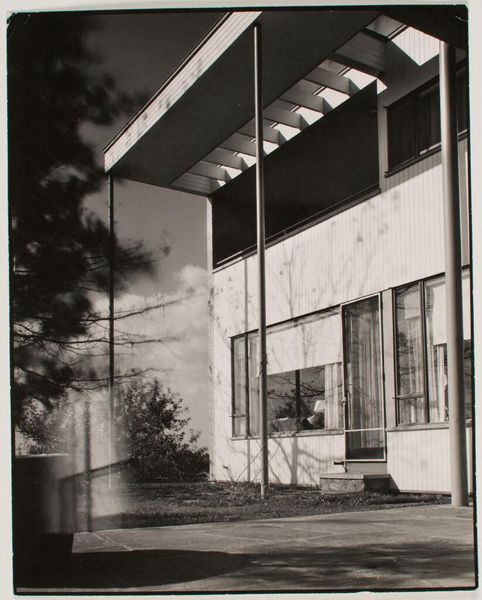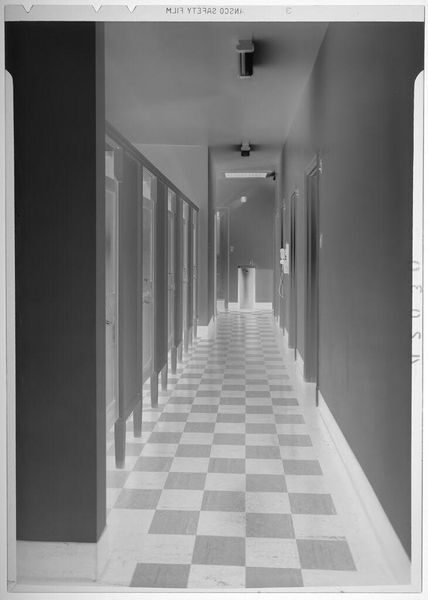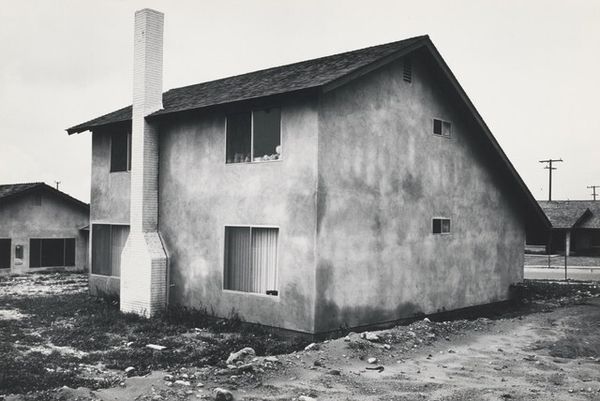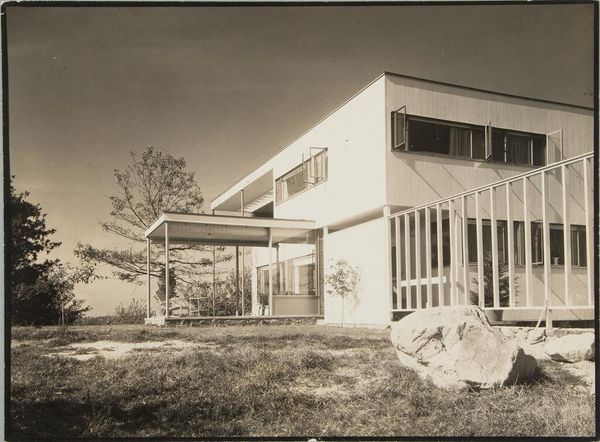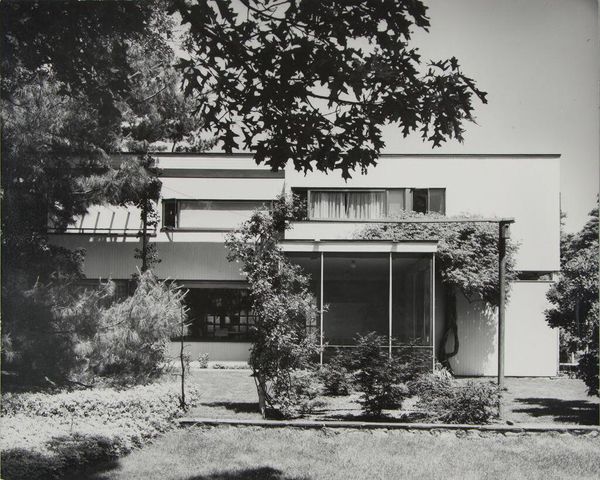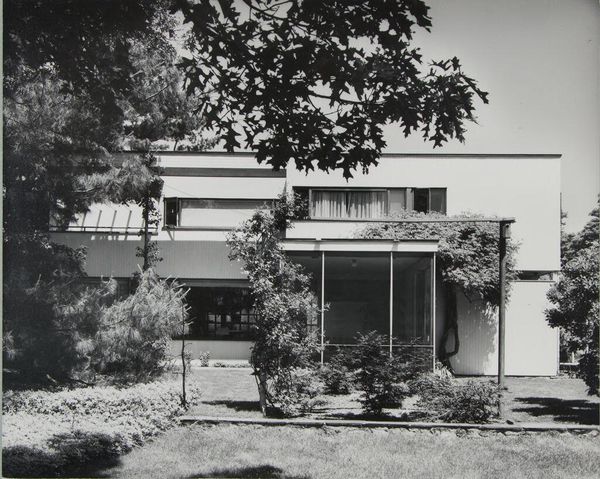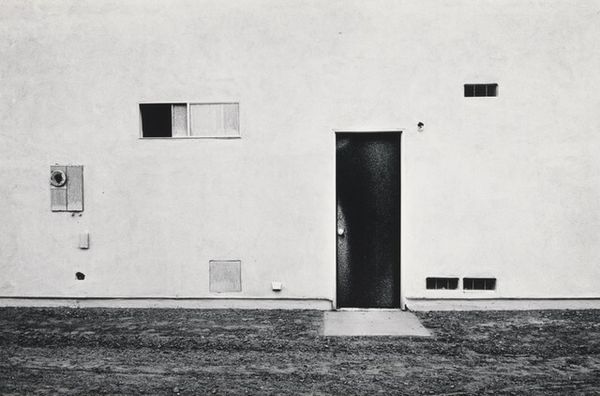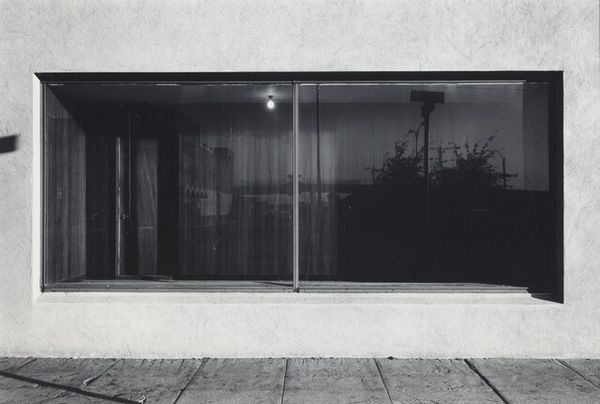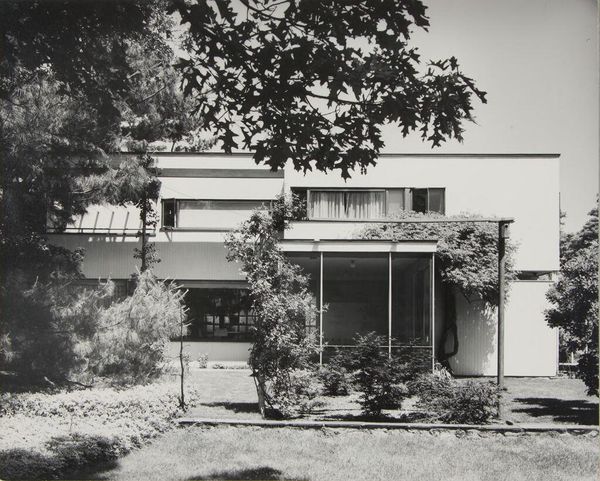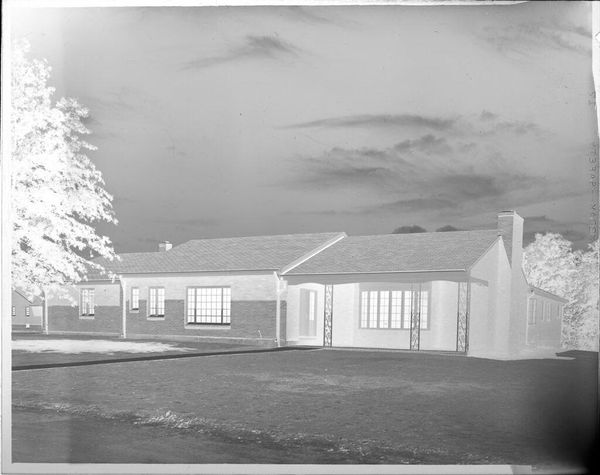
photography, architecture
#
photography
#
architecture
#
cityscape
#
architecture
Dimensions: image: 14.2 × 21.2 cm (5 9/16 × 8 3/8 in.) sheet: 25.3 × 25.4 cm (9 15/16 × 10 in.)
Copyright: National Gallery of Art: CC0 1.0
Curator: This is "Sacaton Central School, Sacaton, Arizona" by David Vestal, taken in 1966. It’s a gelatin silver print. What's your initial impression? Editor: The long, receding veranda definitely gives it a sort of liminal, almost melancholy feeling, wouldn't you agree? Curator: Absolutely. The starkness of the architecture combined with the children in the distance really sets a specific tone, it speaks volumes about access to education and representation, or lack thereof, within indigenous communities. It really draws attention to how education for marginalized communities often exists within very specific social and political climates. Editor: And how does that materialize here? It strikes me that the entire composition highlights materials like the concrete of the porch, the wooden supports—simple, almost austere choices. I'm curious about where those resources would have been sourced, what laborers would have been used during a time with the inequitable dynamics for marginalized groups. Curator: A very valid question. Vestal’s image acts as a subtle critique, wouldn't you say? Highlighting the imposed architectural presence on Native land, mirroring colonial structures designed to assimilate rather than celebrate the distinct culture of the area. Editor: Precisely, it's a question of power. Materials are never neutral. The decision to build with concrete, rather than utilizing traditional, locally-sourced materials, reveals so much. The labor behind this simple space also begs to be discussed, the way in which labor can construct hierarchies and impose outside expectations onto community. Curator: That adds to my reading of those two figures running in the background; they almost represent hope, as well as future generations negotiating an ever-shifting cultural landscape imposed upon them. It's an image that provokes crucial discourse on cultural autonomy, I would suggest. Editor: And from a material perspective, the permanence of the structure contrasts with the transience of the children. The stark white speaks volumes about accessibility—who was included in that space, who was excluded, whose labor went into creating such a stark reality? It allows for questions, as do all important and evocative visual texts, of labor, material and community. Curator: Ultimately, this single photographic still prompts us to consider architecture, material choice, and their entwined relationships within broader frameworks. It reveals power, history, and its enduring legacy. Editor: Precisely—and perhaps understanding the labor and construction in this image illuminates what is concealed even better than it does what’s visible to the naked eye.
Comments
No comments
Be the first to comment and join the conversation on the ultimate creative platform.

